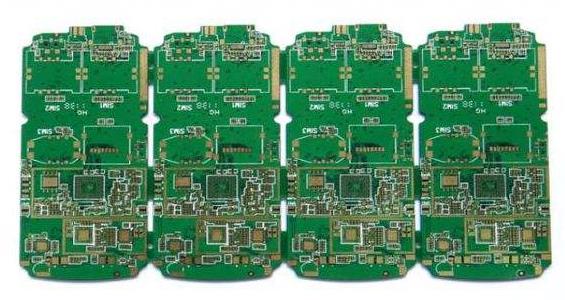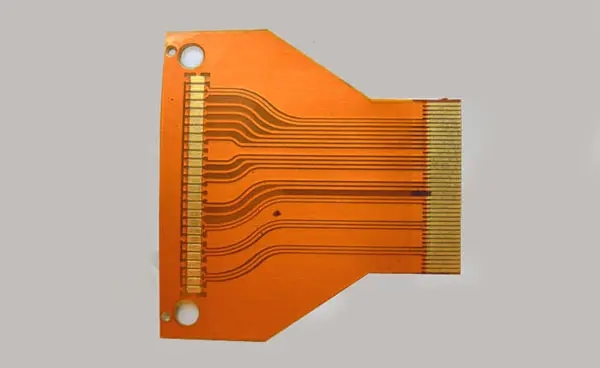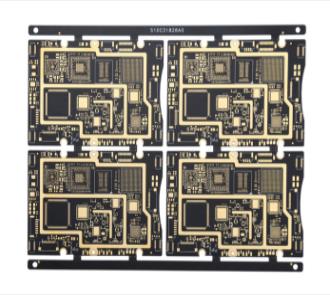
What are the common problems of copper plating technology in 5G PCB process?
PCB manufacturers, PCB designers and PCBA manufacturers explain to you: What are the common problems of copper plating technology in 5G PCB process? The solution is
Copper electroplating is the most widely used pre coating to improve the adhesion of the coating. Copper coating is an important part of the protective decorative coating copper/nickel/chromium system. The flexible and low porosity copper coating plays an important role in improving the adhesion and corrosion resistance between the coatings. Copper coating is also used for local impermeable carbon, metallization of PCB holes, and as the surface layer of the printing roller. After chemical treatment, the colored copper layer is coated with organic film and can also be used for decoration. In this paper, we will introduce the common problems encountered in the 5G PCB process of copper electroplating technology and their solutions.
1、 Common problems in acid copper electroplating
Copper sulfate electroplating plays a very important role in 5G PCB electroplating. The quality of acid copper electroplating directly affects the quality of copper plating layer and related mechanical properties, and has a certain impact on subsequent processing. Therefore, how to control the quality of acid copper electroplating is an important part of 5G PCB electroplating, and is also one of the processes that are difficult to control in many large factories. Common problems in acid copper electroplating mainly include: 1. Coarse electroplating; 2. Electroplating (plate surface) copper particles; 3. Plating pits; 4. The board surface is white or uneven in color. In view of the above problems, some summaries are made, and some brief analysis, solutions and preventive measures are carried out.
1. Coarse electroplating
Generally, the plate angle is rough, most of which is caused by large electroplating current. You can lower the current and use a card meter to check whether the current display is abnormal; The whole board is rough and generally does not appear, but the author has met with the customer once, and later found out that the temperature was low in winter and the content of polish was insufficient; In addition, sometimes the surface of some reworked film shedding boards is not cleaned.

2. Copper particles on electroplating plate
There are many factors that cause copper particles on the board. From copper deposition to pattern transfer, copper electroplating itself is possible. The author has met the copper grains on the board caused by sinking copper in a large state-owned factory.
Copper particles on the plate surface caused by copper precipitation process may be caused by any copper precipitation treatment step. Alkaline degreasing will not only cause the roughness of the board surface, but also cause the roughness in the hole when the water hardness is high and the drilling dust is too much (especially when the double-sided board is not filtered properly); But generally, it will only cause roughness in the hole, and slight pitting dirt and micro corrosion on the plate surface can also be removed; There are several cases of micro etching: the quality of hydrogen peroxide or sulfuric acid used as the micro etching agent is too poor, or ammonium persulfate (sodium persulfate) contains too much impurities. It is generally recommended that the micro etching agent should be at least CP grade, and industrial grade will cause other quality failures in addition; The copper content in the micro etching groove is too high or the temperature is too low, which causes the slow precipitation of copper sulfate crystals; The tank liquid is turbid and polluted. The activation solution is mostly caused by pollution or improper maintenance, such as air leakage of the filter pump, low specific gravity of the tank solution, and high copper content (the activation tank has been used for a long time, more than 3 years). In this way, granular suspended solids or impurity colloids will be generated in the tank solution, which will be adsorbed on the plate surface or the hole wall, accompanied by roughness in the hole. Degumming or acceleration: the tank solution has been used for too long and appears turbid, because most of the solution is now prepared with fluoroboric acid, which will attack the glass fiber in FR-4, resulting in the increase of silicate and calcium salts in the tank solution. In addition, the increase of copper content and tin dissolution in the tank solution will produce copper particles on the board surface.
The copper settling tank itself is mainly caused by the excessive activity of the tank liquid, dust in the air agitation, and many small particles suspended in the tank liquid. It can be effectively solved by adjusting the process parameters, increasing or replacing the air filter element, and filtering the whole tank. After copper precipitation, the dilute acid tank of the copper plate shall be temporarily stored, and the tank liquid shall be kept clean. If the tank liquid is turbid, it shall be replaced in time. The storage time of the copperplate should not be too long, otherwise the plate surface is easy to be oxidized, even in acid solution, and the oxide film is more difficult to be removed after oxidation, so the plate surface will also produce copper particles. The copper particles on the surface of the plated copper plate formed by the copper deposition process mentioned above, except for those caused by the oxidation of the plate surface, are generally evenly distributed on the plate surface with strong regularity, and the pollution generated here will cause the generation of copper particles on the surface of the plated copper plate no matter whether it is conductive or not. Some small test plates can be used to handle the problem step by step for comparison and judgment, and the on-site fault plates can be solved with a soft brush; Graphic transfer process: there is residual glue in the development (extremely thin residual film can also be plated and coated during electroplating), or the plate is not cleaned after development, or the plate is placed for too long after graphic transfer, which causes oxidation of the plate surface to varying degrees, especially when the plate is poorly cleaned or the air in the storage workshop is heavily polluted. The solution is to strengthen water washing, strengthen planning and scheduling, and strengthen acid degreasing intensity.
At this time, the pretreatment of the acid copper electroplating bath itself will generally not cause copper particles on the board, because the most non-conductive particles will cause missed plating or pits on the board. The causes of copper particles on the plate surface caused by the copper cylinder can be summarized into several aspects: tank fluid parameter maintenance, production operation, material and process maintenance. In terms of tank liquid parameter maintenance, it includes too high sulfuric acid content, too low copper content, low or too high tank liquid temperature, especially in plants without temperature control cooling system, which will cause a drop in the current density range of tank liquid. According to normal production process operation, copper powder may be generated in the tank liquid and mixed with the tank liquid;
In terms of production operation, excessive current, poor clamping plate, empty clamping point, plate dropping in the tank relying on anode dissolution, etc. will also cause excessive current of some plates, produce copper powder, fall into the tank liquid, and gradually produce copper particle fault; In terms of materials, the main problems are the content of angular phosphorus in phosphor copper and the uniformity of phosphorus distribution; In terms of production and maintenance, it is mainly the major treatment. When adding copper corners, they fall into the tank. It is mainly the major treatment, anode cleaning and anode bag cleaning. Many factories do not handle them well, and there are some hidden dangers. For the major treatment of copper ball, the surface shall be cleaned, and the fresh copper surface shall be slightly etched with hydrogen peroxide. The anode bag shall be soaked with sulfuric acid hydrogen peroxide and alkaline solution successively, and cleaned. In particular, the anode bag shall use a 5-10 micron gap PP filter bag.
3. Electroplating pit
This defect also causes many processes, from copper deposition, pattern transfer, to pretreatment of electroplating, copper plating and tin plating. The main cause of copper sinking is the poor long-term cleaning of the copper sinking basket. During micro etching, the contaminated solution containing palladium and copper will drop from the basket on the plate surface, causing pollution. After the electricity of the copper sinking plate, it will cause spot leakage, that is, pits. The graphic transfer process is mainly caused by poor equipment maintenance and development cleaning. There are many reasons: the suction stick of the brush roller of the plate brush pollutes the glue stains, the internal organs of the air knife blower in the drying section are dried, and there is oil dust, etc. The plate surface is not properly coated or dedusted before printing, the developer is not clean, the water is not good after development, and the silicon containing defoamer pollutes the plate surface. For pretreatment before electroplating, no matter acid degreaser, micro etching, pre immersion, the main component of the bath solution is sulfuric acid, so when the water hardness is high, turbidity will appear and pollute the board surface; In addition, some of the company's hangers have poor adhesive wrapping, which will be found dissolved and diffused at night in the tank after a long time, polluting the tank liquid; These non-conductive particles are adsorbed on the surface of the panel, which may cause electroplating pits of varying degrees for subsequent electroplating.
4. Whitening or uneven color
The acid copper electroplating tank itself may have the following aspects: the air tube deviates from the original position, and the air agitation is uneven; The filter pump leaks air or the liquid inlet inhales air close to the air blower pipe, generating fine air bubbles that are adsorbed on the board surface or line edges, especially the horizontal line edges and line corners; In addition, there may be another point that the use of low-quality cotton core is not thoroughly treated, and the anti-static treatment agent used in the manufacturing process of cotton core pollutes the bath solution, resulting in leakage of plating. In this case, the air blowing can be increased, and the liquid level foam can be cleaned in time. After the cotton core is soaked in acid and alkali, the color of the board will be white or uneven: mainly due to the polishing agent or maintenance problems, and sometimes it may be the cleaning problem after acid degreasing, and the micro corrosion problem. It may be caused by the maladjustment of polish in copper cylinder, serious organic pollution and high temperature of bath liquid. Generally, there is no cleaning problem in acid degreasing, but if the pH value of the water is acidic and there are many organic substances, especially recycled circulating water washing, it may cause poor cleaning and uneven micro corrosion; The micro etching mainly considers that the content of micro etchant is too low, the copper content in the micro etching solution is too high, and the temperature of the bath solution is low, which will also cause uneven micro etching on the plate surface; In addition, the quality of the cleaning water is poor, the washing time is slightly long or the prepreg acid solution is polluted, and the surface of the treated plate may be slightly oxidized. During electroplating in the copper bath, the oxide is difficult to remove because it is acidic oxidation and the plate is charged into the bath, which will also cause uneven color of the plate surface; In addition, such defects may also be caused by uneven anode conductivity and anode passivation when the board surface contacts the anode bag.
Some common problems in acid copper plating process summarized in this paper. At the same time, the acid copper plating process is widely used because of its simple basic composition, stable solution, high current efficiency, and the addition of appropriate brighteners to obtain coatings with high brightness, high flatness, and high plating ability. The selection and application of acid copper brightener is also the key to the quality of acid copper plating layer. Therefore, it is hoped that the majority of staff can accumulate experience in their daily work, not only to find and solve problems, but also to fundamentally improve the technology level through innovation. PCB manufacturers, PCB designers and PCBA manufacturers explain to you: What are the common problems of copper plating technology in 5G PCB process? The solution is









